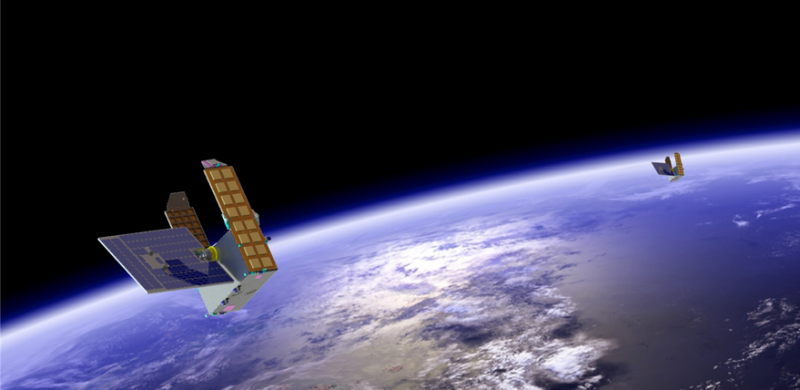
Space gives humanity a unique perspective on the planet we call home. On April 1, 2022, Redwire technology will fly into Earth’s orbit aboard the latest of PlanetiQ’s weather and climate monitoring satellites, GNOMES-3. Launching aboard a Falcon 9 rocket on the Transporter 4 Mission, this satellite is the third in the line of the GNSS Navigation and Occultation Measurement Satellite series, which uses detailed measurements of radio waves emitted by navigation satellites like those in the GPS constellation to study Earth’s atmosphere.
Redwire is becoming a leader in space-based solar power generation, with rigid and flexible solar arrays operating on the International Space Station, multiple satellites orbiting Earth and even missions into deep space like the Double Asteroid Redirect Test (DART) mission. The solar array on GNOMES-3 uses a rigid panel that deploys once the satellite is on orbit. The < 3 kg solar array design is lightweight, strong, and highly reliable. It can also be tailored for various applications. Previous versions of the solar array on GNOMES-3 produced around 130 watts of power. The array aboard GNOMES-3 will provide the power needed to collect and analyze thousands of radio signal measurements each day.

GNOMES satellites use radio occultation to study Earth’s atmosphere. Signals from navigation satellites like GPS refract, or bend, as they pass through Earth’s atmosphere. Equipment on the satellite can measure tiny delays in the radio signal’s timing to tell how much the signal bent. This in turn can reveal atmospheric temperature, pressure and water vapor content. A large number of satellites would allow greater coverage of the planet and enable better atmospheric data collection.
Over the next few years, GNOMES-3 will have company as PlanetiQ launches more weather and climate monitoring satellites to build a 20-satellite constellation.
Data from GNOMES-2, GNOMES-3, and future GNOMES satellites will give improved weather forecasting and climate data as well as improved monitoring of solar flares and other space weather events. Having a better grasp on space weather is crucial as events like solar flares can affect technology on Earth and in space.
Redwire is helping improve life on Earth by providing power for GNOMES-3 and for other missions like the recently launched GOES-T weather satellite. With rigid and flexible solar arrays of all sizes, Redwire is positioning itself as a leader in solar power for the next generation space economy.




